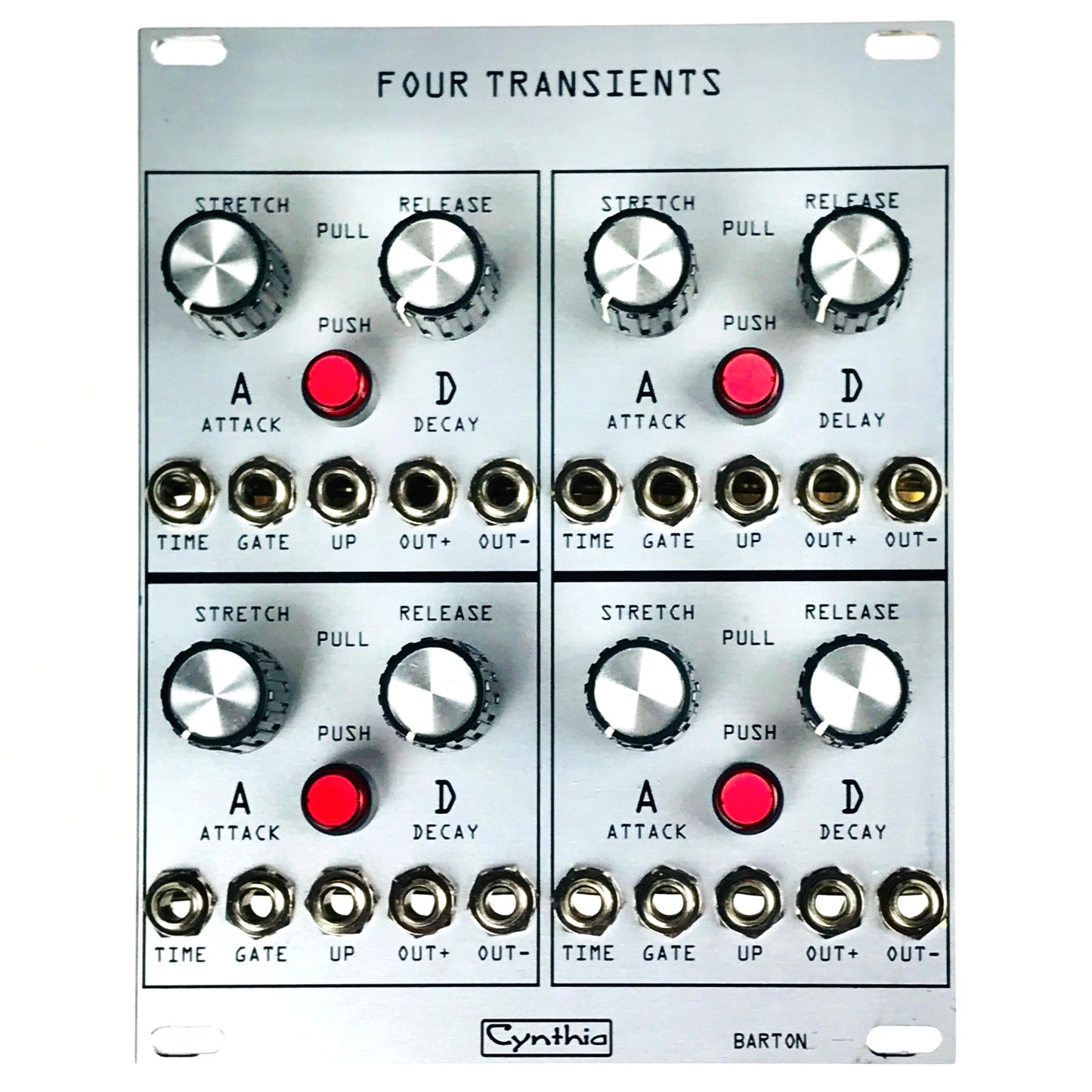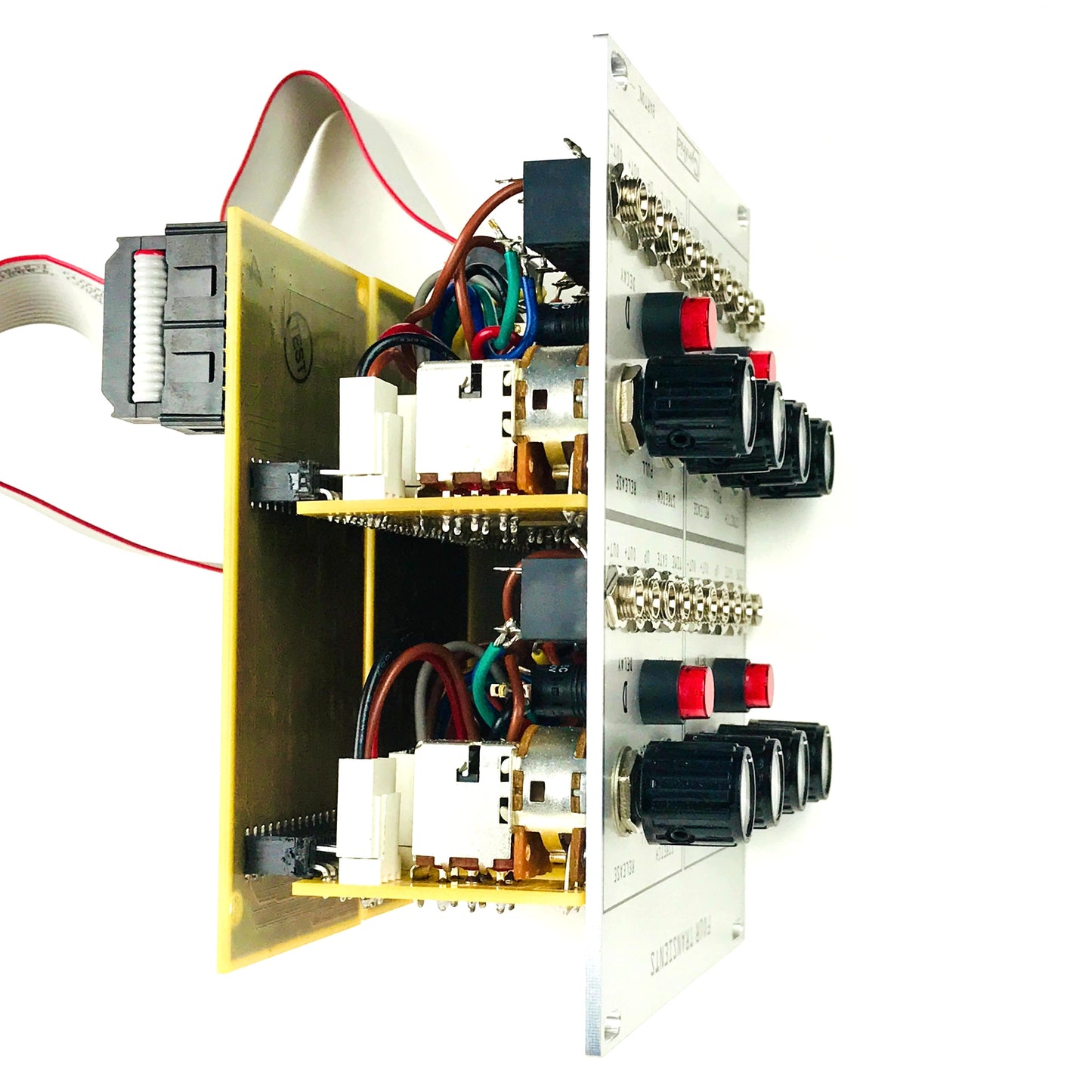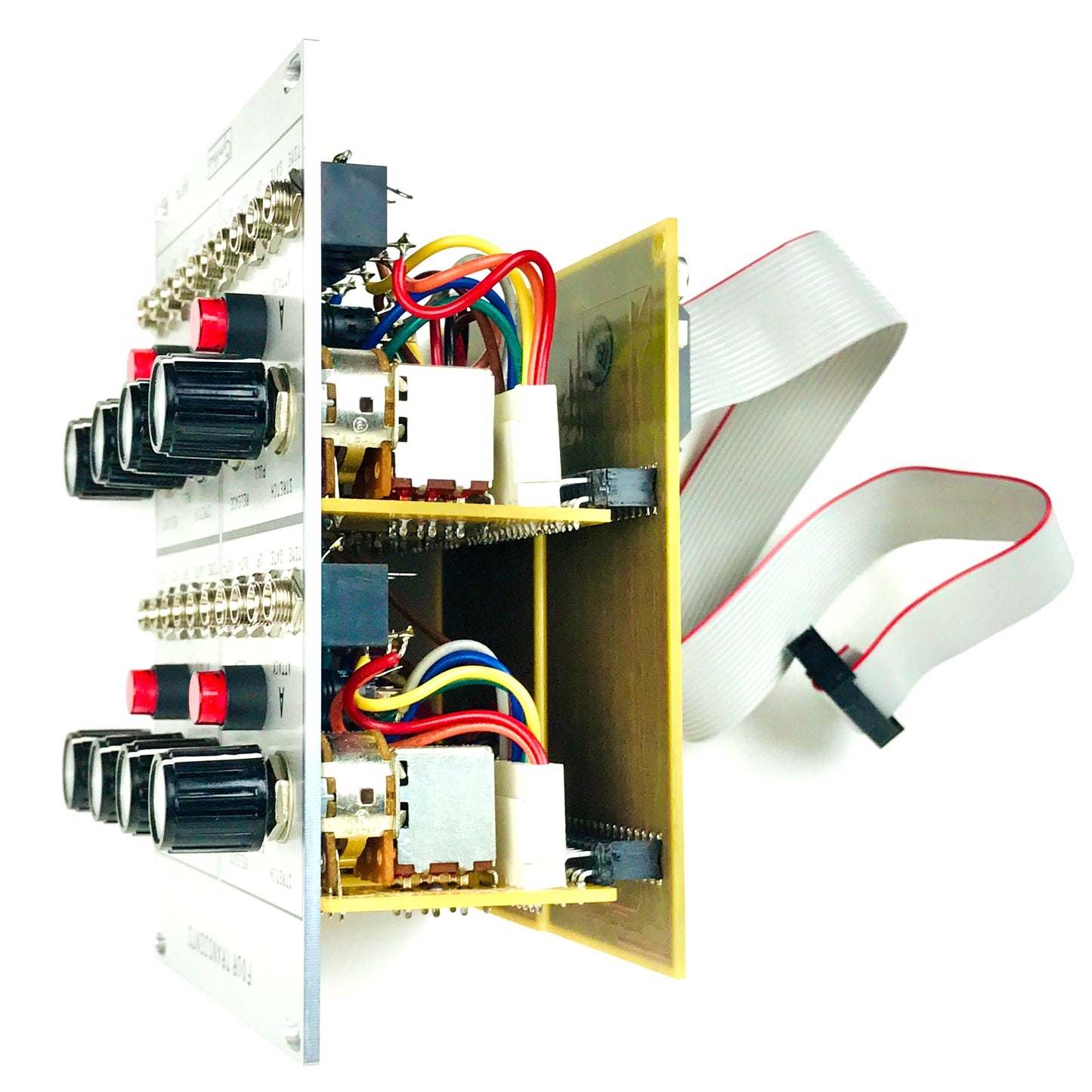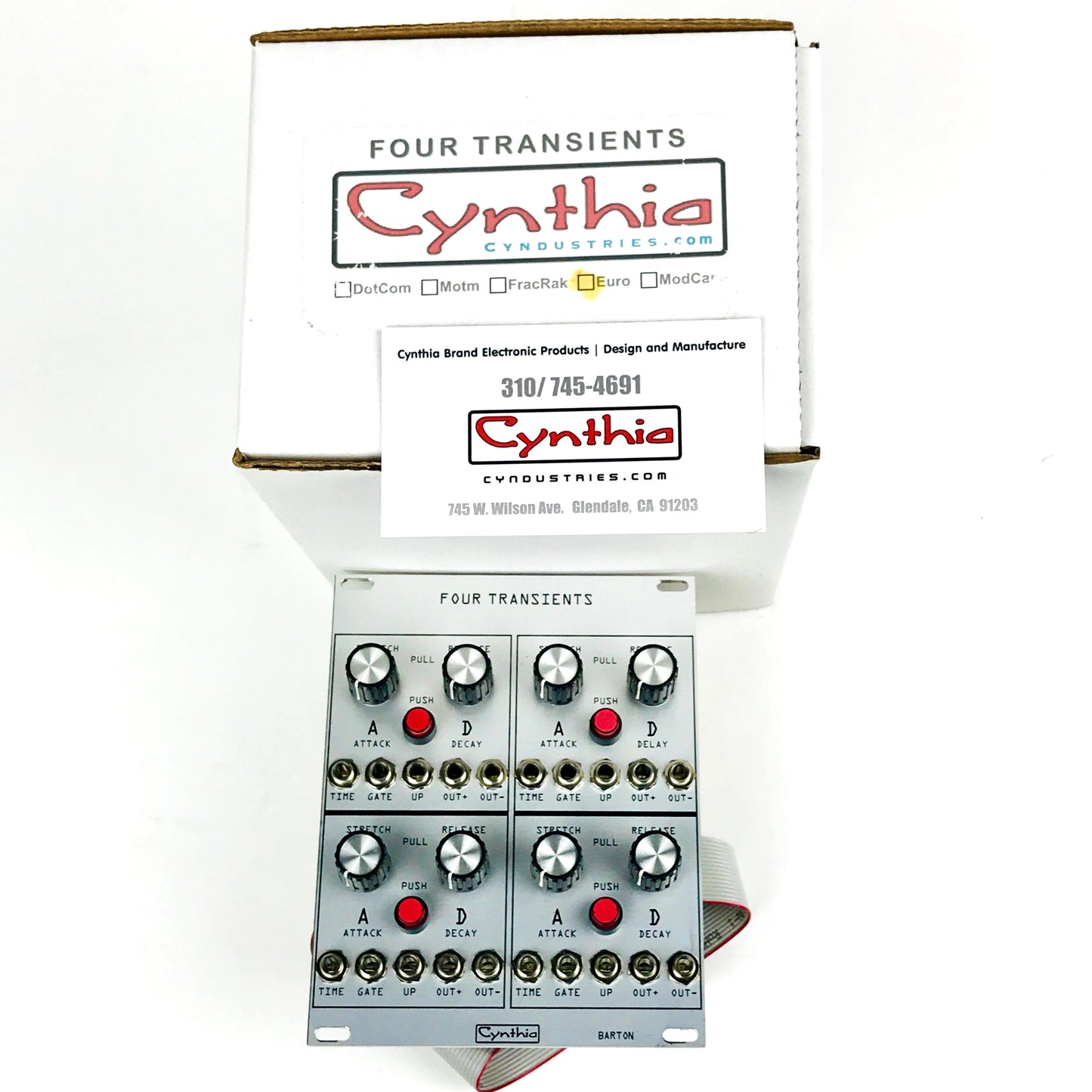Cyndustries Four Transients eurorack module, brand new, old stock (NOS)
Cyndustries Four Transients eurorack module, brand new, old stock (NOS)
Couldn't load pickup availability
Usually, having a transient hanging around isn't a good thing - let alone four of them. But in this case, it's a great thing times four! The Cynthiaᆴ brand, Four Transients module may appear very simple on the surface, but it's simple appearance belies its versatility. Face it, one thing you always come up short on is envelopes. You try using square or triangle waves from LFOs and gates when you need more, but that doesn't really cut it. It would be great if one little module could be the last word in filling this gap.
Four Transients gives you four simple, independent envelopes that can each be either the AD or AR type. In AR mode, there is an attack phase up to 5v which holds as long as the gate input is held high. The release phase returns the output to 0v when the gate falls. All very familiar, and this is probably the most general and widely used envelope type. You get four of these puppies!
However, the AD mode is something not usually seen. In a conventional ADSR unit, if the gate falls before the attack & decay phases have completed, the unit enters the release phase. This means if you have a slow attack and a brief gate, the envelope might not ever even get off the ground. This is fine if that's what you want. However, Four Transients does something different. The AD transient is self-completing. In response to the rising edge of the GATE input, the envelope goes through the entire attack and decay phases from 0v to +5v and back to 0v, no matter how long that takes. This makes it perfect for those self running, automated patches we all love to create. In AD mode, the attack cannot be re-triggered during its own phase, but is available for re-triggering during the decay phase. You get four of these!
Ins Outs and Knobs
The A knob controls the attack time in the usual way. If you pull it, all times will stretch by about 100 times for those ssssslllllllooooooowwwww events.
The D knob controls the decay time in the usual way. If you pull it, the section changes from AD to AR operation, and the knob controls the release time instead.
The GATE jack inputs any waveform and derives a gate signal from it. If it crosses above +2.5v, it's a gate.
The TIME jack accepts a control voltage that makes all times (for that section) longer or shorter. Higher voltages make things faster (just like a VCO).
The OUT jack, well, you know.
The button is for manual firing and the brightness of the LED in the button tracks the transient.
The PULSE jack (available on some units) presents a logic high signal during the attack phase of the transient. The behavior is the same in AD and AR modes. This PULSE will drop after the attack phase and not hold even though the GATE is still high.
Remember how we said that its simplicity is deceiving? Here's what else this baby can do. In addition to AD and AR modes, you can create ADSR behavior by mixing two transients together. Set one section to AD mode, the other to AR mode. Panning between the two outputs (with a simple mix or pan) varies the sustain level. Set the A's equal. When you do this, you will have simultaneous AD, ADSR, and AR signals available. You can make two ADSRs with this module!
You can create AHD envelopes as well. Patch the PULSE output of one section into the GATE of another. The A knob gives you your Hold time. The second section is set for AR operation and the knobs there will give you your A and D times. You can make two AHD generators with this module! Remember, the AHD will self-complete...
You can create a gate delay with two sections as well. Do the following: Set both transients to AR mode. The A knob on the first will be your delay (set R to zero). Patch the output of this transient to the GATE input of the second. Set A and R to zero to create instantaneous edges. This is what happens; when the input GATE appears, the first transient rises slowly from zero. When it reaches 2.5v, the second transient will fire and stay on creating a delayed gate signal. When the input GATE falls, both transients instantly fall. You can make two gate delays with this module!
Since you get Four Transients, you have enough to create a DADSR or DAHD envelope and still have one section left over!
You can extend the principle outlined above by patching more than 2 sections in series or even in loops. You can get the transients to self-perpetuate in a pseudo quadrature sort of way. Play with staggering the times and modulating the TIME jacks. Swinging rhythms await...
The PULSE output acts as a one-shot. You can use this to time events. A quick flick of the GATE, and the PULSE output remains high for a pre-determined time, controlled by the A knob, and then falls. You could plug that into something...
You can make radical, ultra snappy, hyper-sloped envelopes by feeding an OUTput back into its own TIME jack. When output values are high, the slopes will be steeper and vice versa. This is like self-modulating a VCO. The TIME jack has a huge range and responds exponentially.
How about audio uses. The transients can be made to run so fast that you can use them to process audio. Wha? Yeah, turn any signal into a stream of shaped transient pulses. Run a VCO square wave in and get a constant-time transient pulse per cycle out. Get tracking with the TIME jack if you want it. Changing A and/or D changes the timbre of the pulse, and modulating the TIME jack creates VCF-like effects. Crazy mixed waveforms in, equals crazy, confused transients out. We bet you're not used to listening directly to your envelope generators! (I guess we just broke another rule :)
Share



















